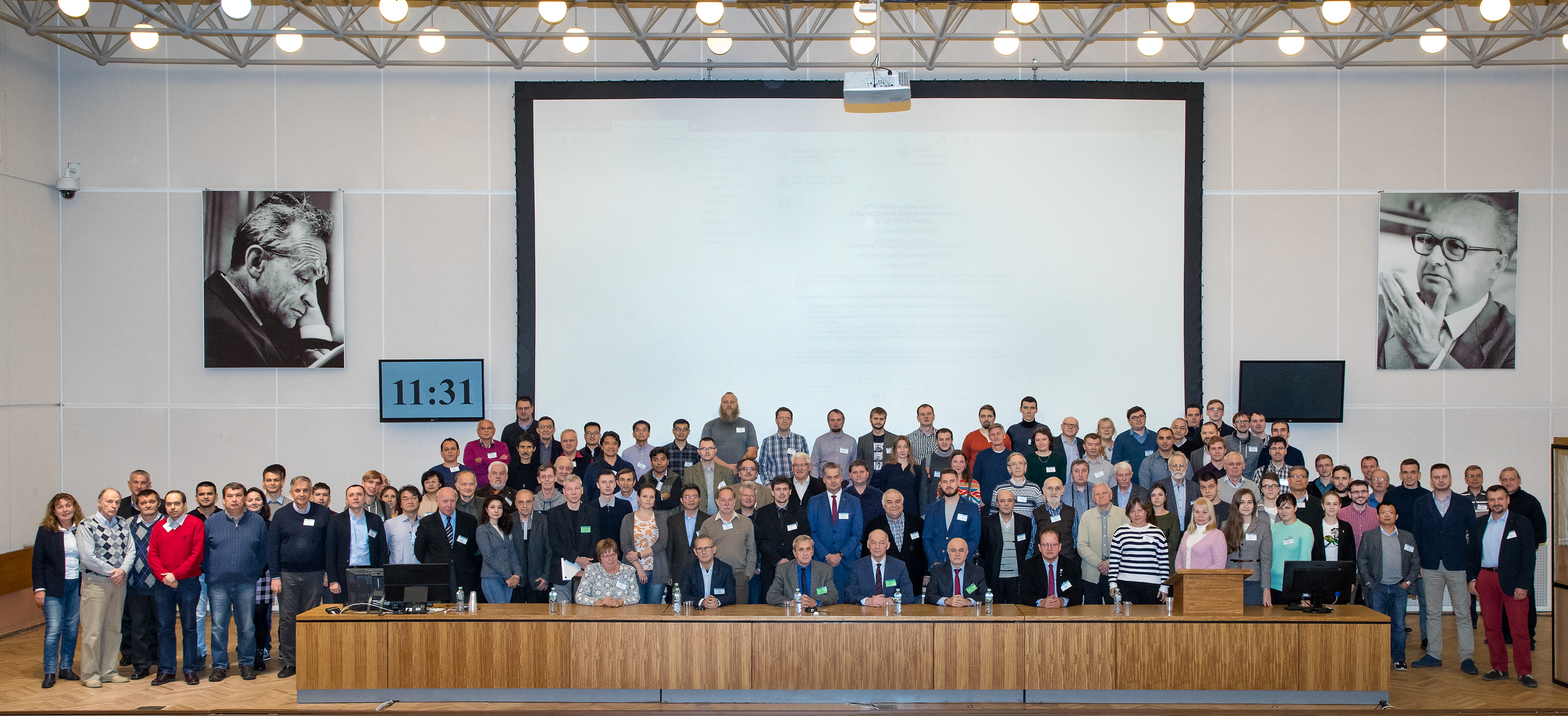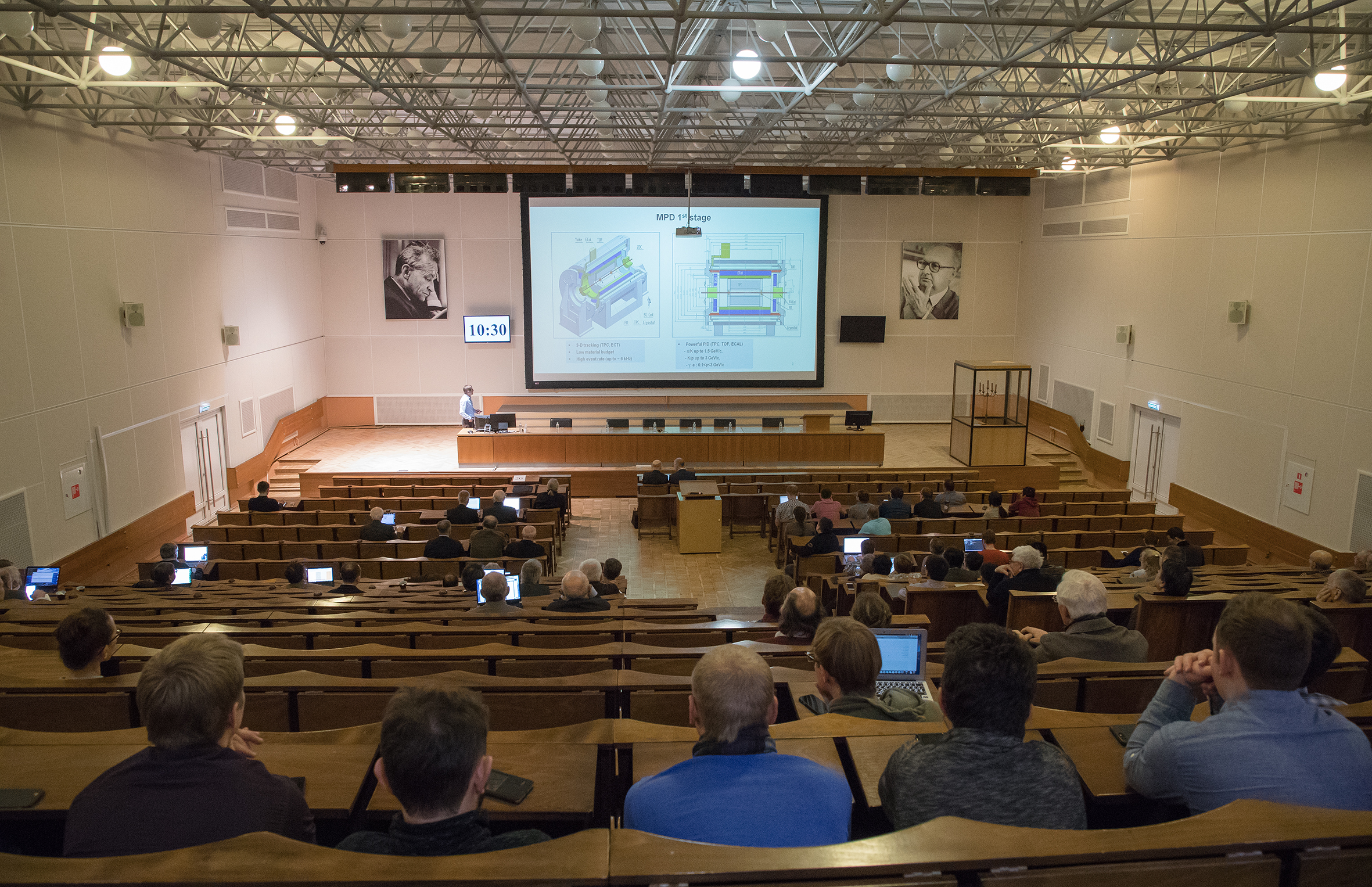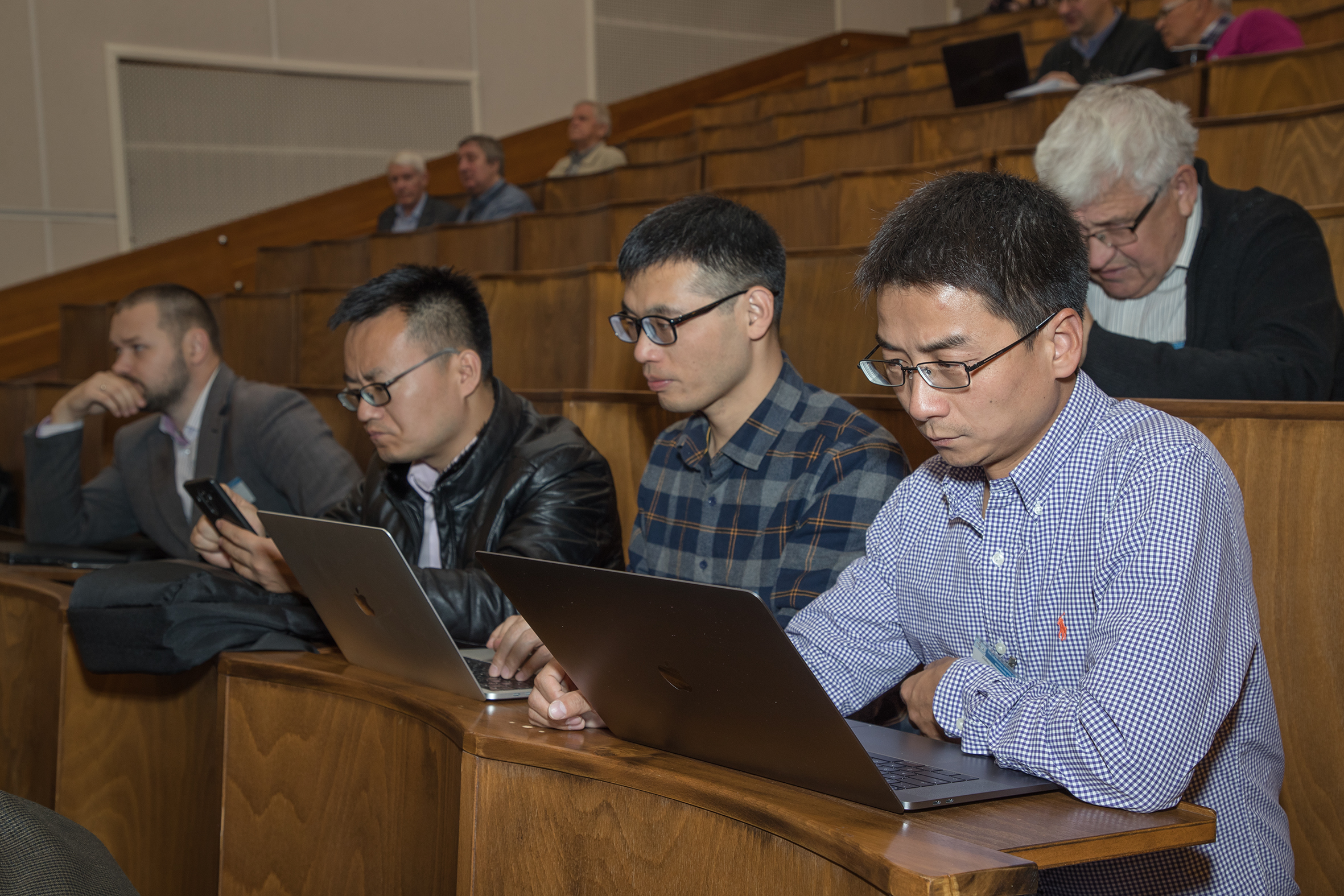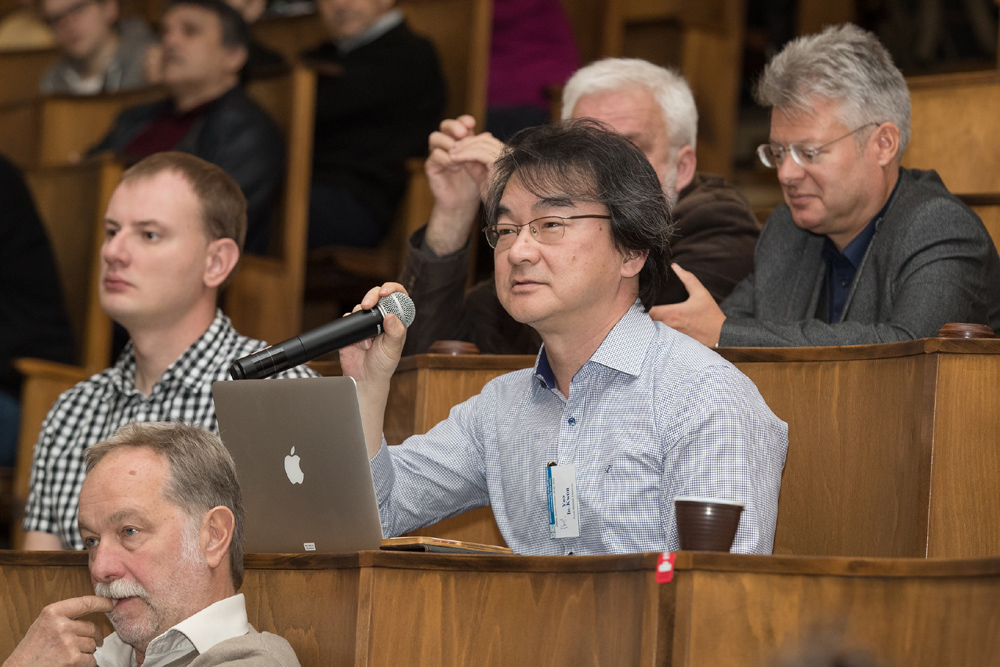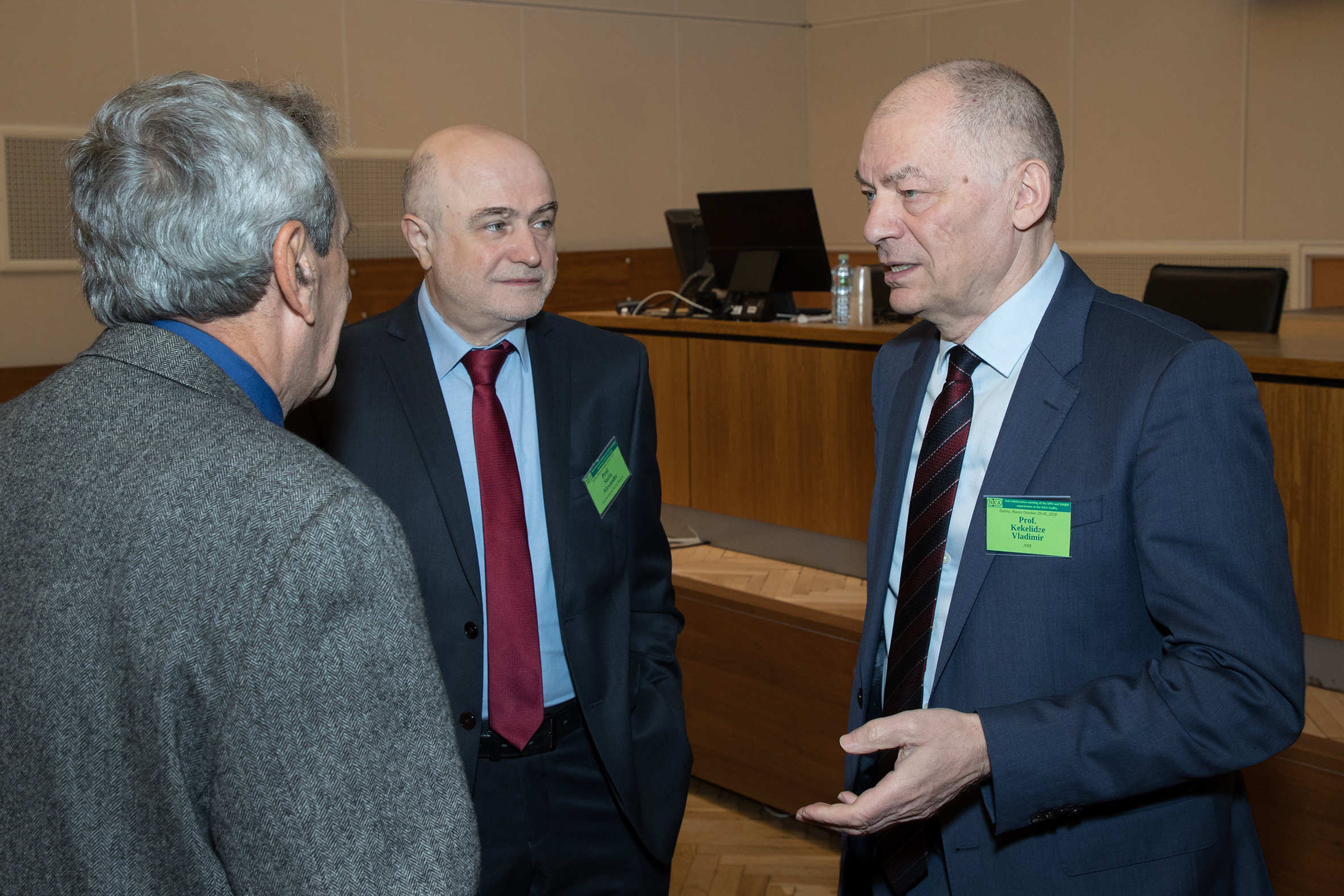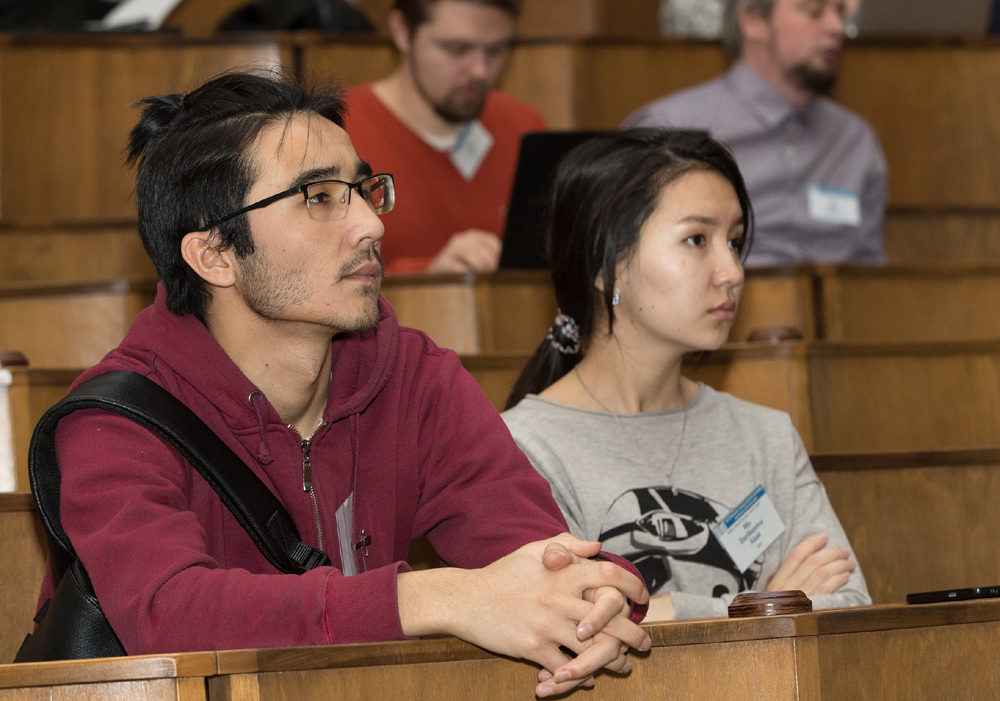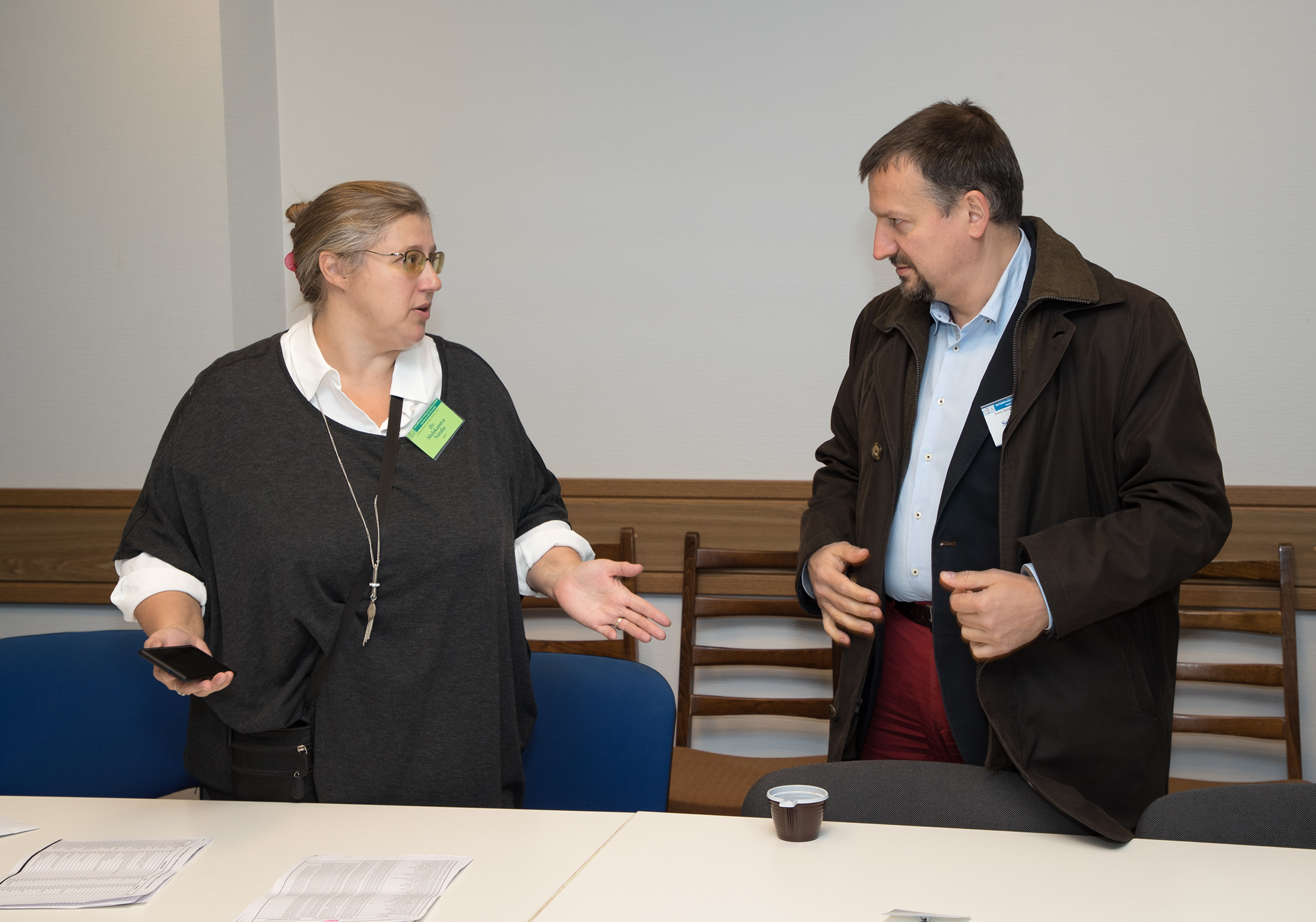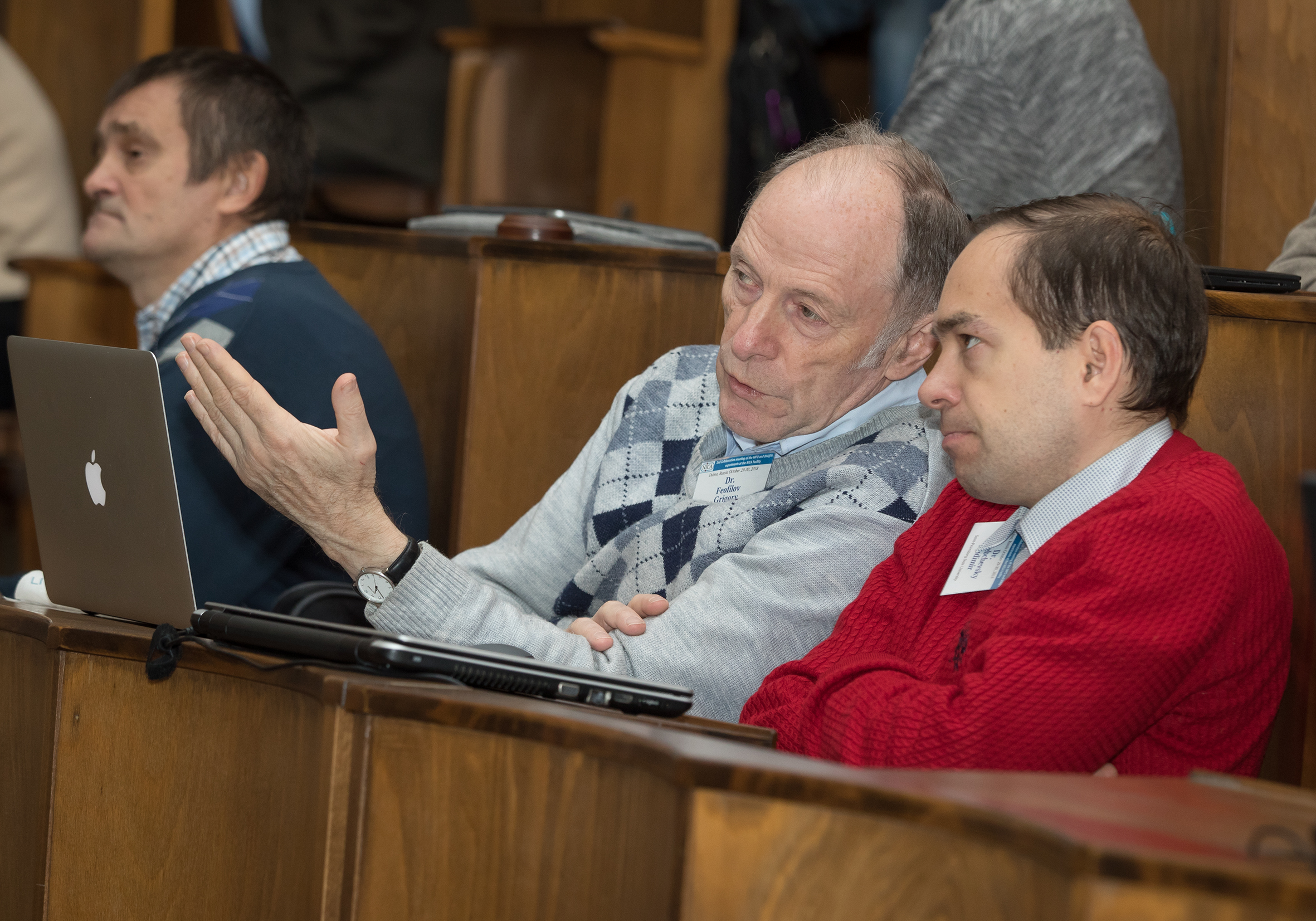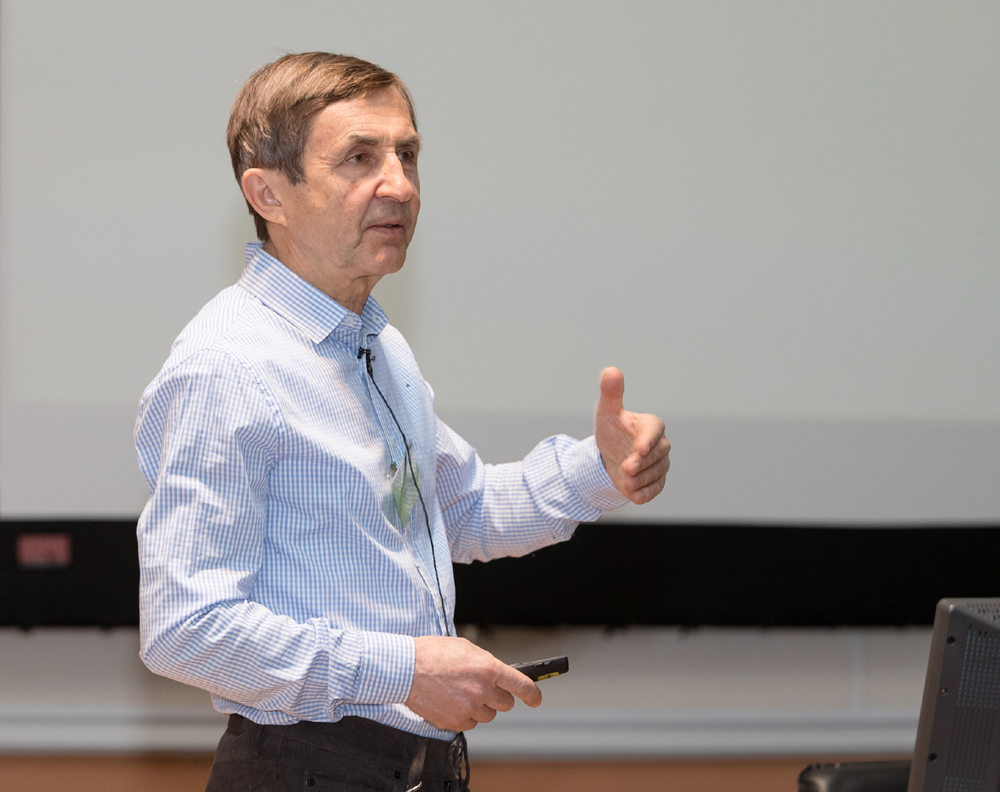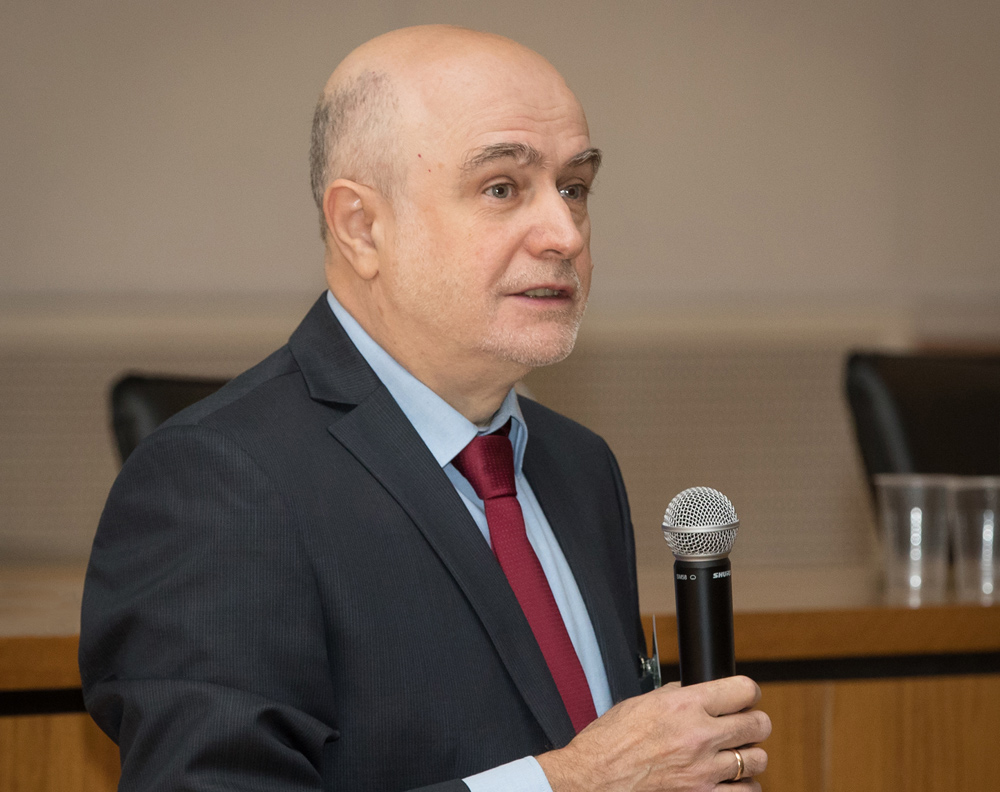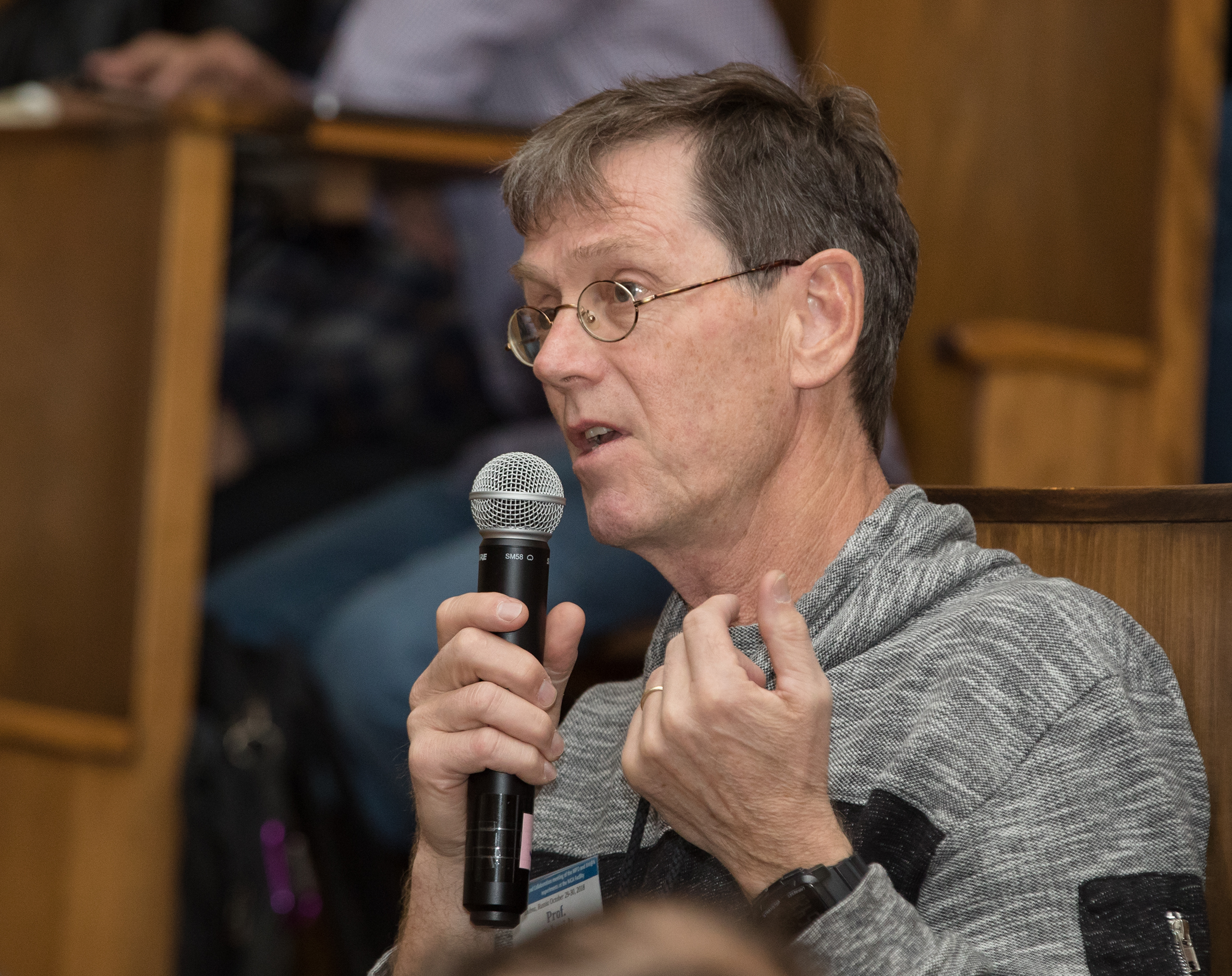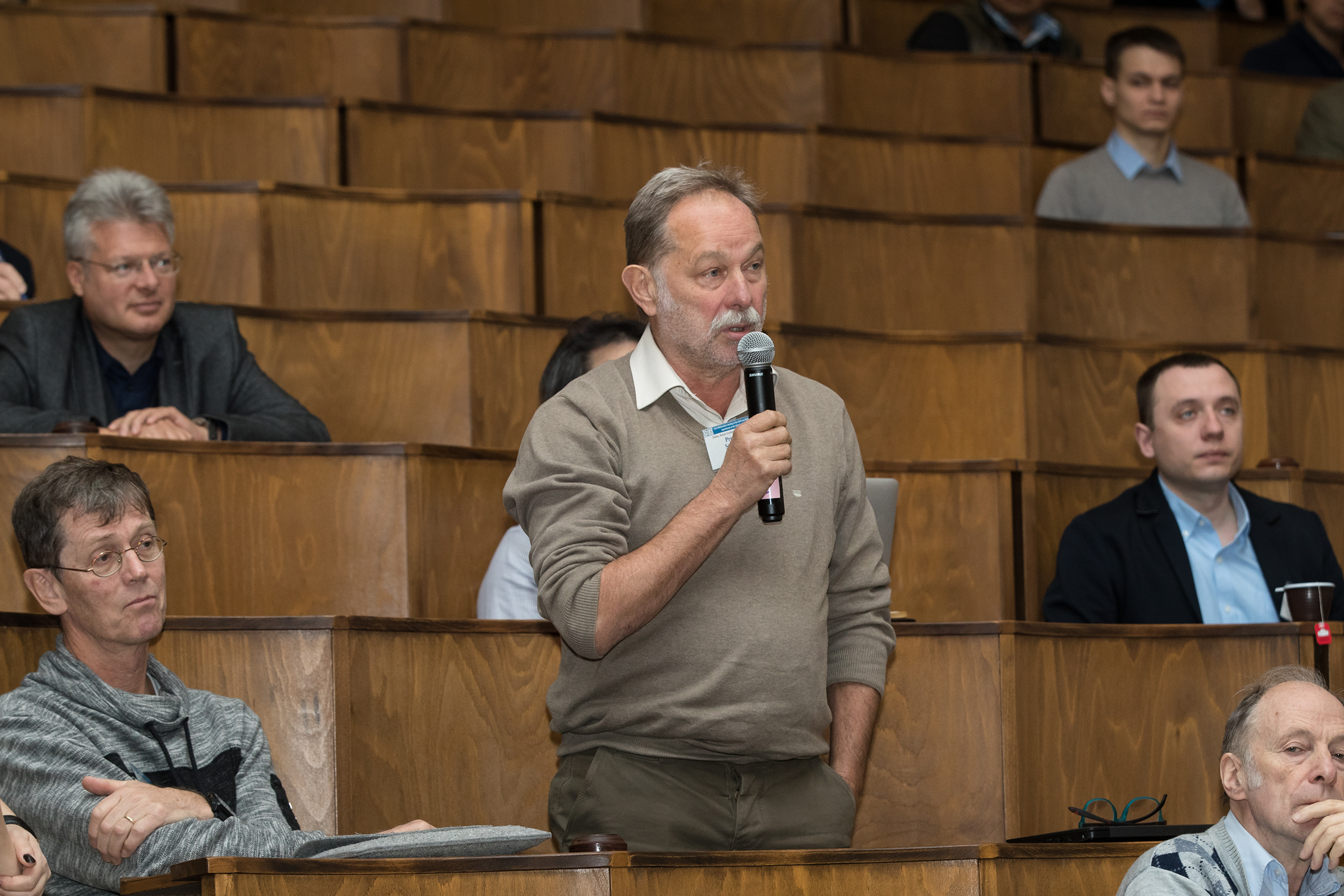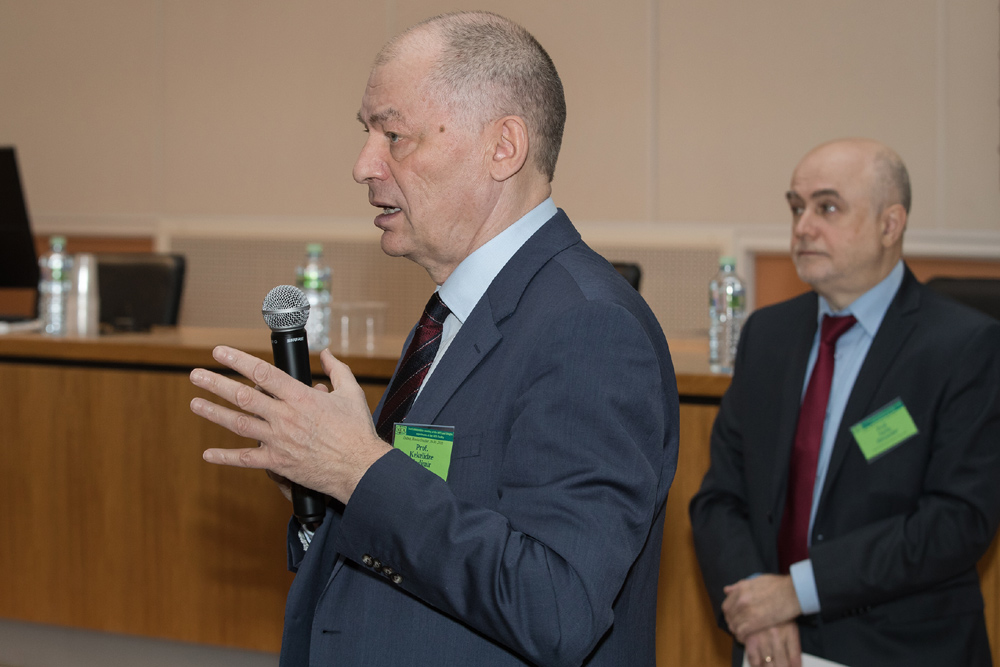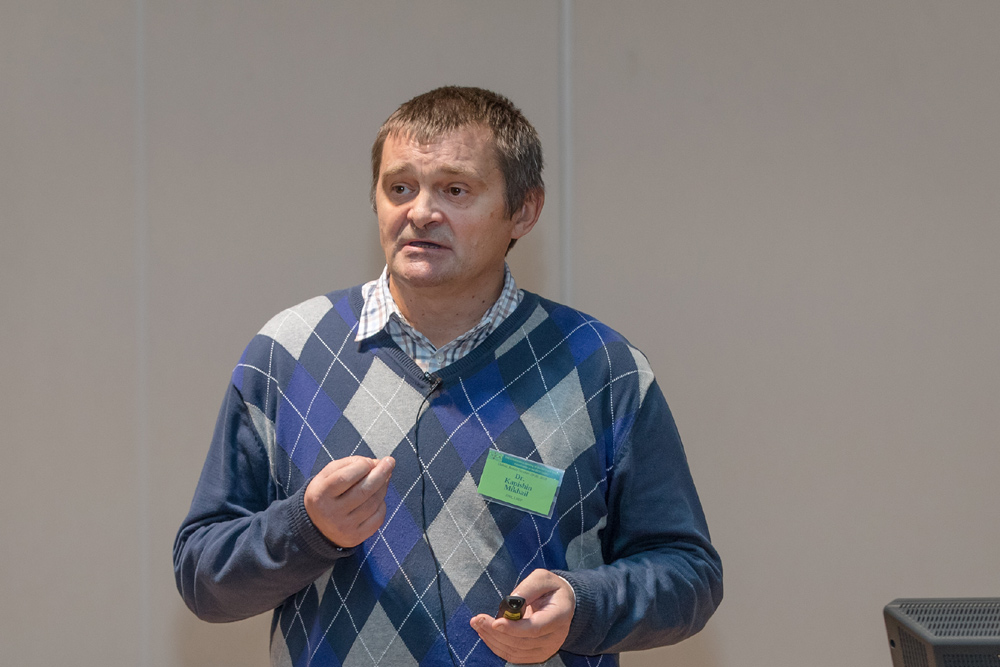V.D. Kekelidze: “We start working according to international standards”
News, 15 November 2018
On 29 – 30 October 2018, the 2nd Collaboration Meeting of the MPD and BM@N experiments at the constructed accelerator complex NICA was held in the Veksler and Baldin Laboratory of High Energy Physics JINR. About 180 participants from Azerbaijan, Belarus, Bulgaria, the Czech Republic, China, France, Georgia, Germany, Israel, Korea, Mexico, Poland, Russia, Slovakia, and Uzbekistan, took part in the event. All participants were representatives of scientific centres interested in participation in these experiments. The first Collaboration Meeting was held in April; the charter was affirmed, and a special committee headed by Professor I. Tserruya was established to select candidates for leading positions in the collaborations. This time, it was planned to hold the elections, discuss the present state and working plans for the experiments.
JINR Vice-Director R. Lednický addressed a welcome speech to the audience. Then, three detailed reviews were presented: on the NICA project (V. Kekelidze), on the MPD experiment (V. Golovatuik), and on the BM@N experiment (M. Kapishin). On that day, after the lunchtime, the elections were held. Professor of the Warsaw University of Technology Adam Kisiel was elected as spokesman for the MPD experiment. Head of the Sector of the MPD Scientific and Experimental Department of the VBLHEP JINR Mikhail Kapishin became Head of the BM@N Collaboration.
Nowadays, meetings are held on both experiments simultaneously as far as technical and technological issues of the facilities’ construction are interrelated, there are a lot of cross points between them. Moreover, it is known that GSI scientists are engaged in the same work. That is why participants of the meetings, as a rule, has long known each other in personal or thanks to large-scale publications, cooperated in large-scale experiments, or, at least, have heard about each other.
“In the MPD experiment, we are responsible for construction of the forward hadron calorimeters,” Fedor Guber says (INR RAS). “In the BM@N experiment, that is underway now, we are also engaged in production of a forward hadron calorimeter. Advanced innovative technologies are used for their production, in particular, we use light collection with fibers and thus detect the light using the advanced developments in the fields of detectors, namely silicon micro-pixels avalanche photodiodes. This work was tested, we produced a similar calorimeter for NA61 in CERN, and it successfully operates there. It turned out that such a development is in demand in other experiments, in particular, here, in Dubna, and at the FAIR facility in the CBM experiment where we produce a similar calorimeter. All work is done in our Institute by INR staff members, about 20 people are engaged in it. We also attract other institutes to this work, for example, INP (Rez), MEPhI.”
Photos by Igor Lapenko, JINR Scientific Information Department
“We participate in both experiments,” Andrei Kugler says (INP CAS, Rez). “My personal interest is the BM@N experiment. My group works at the CBM as well. Jointly with colleagues from Moscow, we develop a calorimeter that is supposed to be used in BM@N. It means that from the technological point of view, we are engaged in the same work there, in the CBM. Of course, the interest in physics, study of condensed baryonic matter lie behind it. FAIR is behind, this experiment seems to develop faster. It means that we will obtain physical results faster. As for the MPD, I represent another our group in it, which is engaged in analysis in CERN and develops detectors. They also want to join this experiment. The contribution of our Institute is specialists and developments. Several our young staff members work now on the NICA project, and we plan to increase their number.”
Such cooperation, proven over time and experiments, makes production of the sophisticated high-precision scientific equipment far simpler. Exchange of experience, expert opinion, transfer of technologies and information based on the interest in physical research are called scientific links, and they are in crucial demand nowadays more than ever. “Such grand experiments are carried out on a large scale and are made in a form of collaborations,” Head of the NICA mega-science project, JINR Vice-Director Vladimir Kekelidze says. “It is a common world practice. Only thus it is possible to advance effectively gathering specialists from all over the world, the best specialists who not only create the detector but also launch it, provide service, and also make analysis, synthesis of knowledge, opinions, technologies, mentalities is needed for it. It is possible to obtain interesting bright results only in such a way.”
A perfect example of cooperation is a 12-year scientific friendship of Johann Heuser, Head of the silicon working group in the CBM collaboration, and Yuri Murin, Head of the VBLHEP Scientific and Experimental Department of Silicon Tracking Systems.
“We are interested to participate in the BM@N for two reasons,” J. Heuser explains. “The first reason is technical one. As far as we have been working at the silicon tracking systems for a long time, we would like to gain practical experience in using this equipment at the Nuclotron a bit earlier that in Germany. It will be a practice in real experimental conditions but not just laboratory tests. In addition to opportunity to test the equipment in real conditions, it will be possible to obtain some new physical data. Both experiments – the BM@N at the Nuclotron and the CBM at the FAIR accelerating complex in Germany – are aimed at obtaining physical data in the same field, in particular, in the field of condensed baryonic matter. Thus, there is a kind of overlap in physical and technological targets. That is why the German party considers BM@N as a zero stage of the CBM experiment.”
“We are working at not only the silicon tracking system for BM@N here, in JINR,” Yu. Murin says. “A possibility of cooperation with CERN and the People’s Republic of China is considered to conduct joint work on the advanced, more technologically advanced inside tracking system for the MPD. At the moment, agreements are signed on using a breakthrough technology of Monolithic Active Pixel Sensors (MAPS) for development of the inner tracking system for the MPD facility. Thus, we will win 25 years and will cover the technological gap that we have today in Russia. Unfortunately, we are a generation behind other countries in the fields of microelectronics, and the Joint Institute is supposed to reduce such a gap as far as our Institute for Russia is and has always been a window to the world. Due to a great contribution of the Joint Institute to the construction of the Large Hadron Collider, we managed to achieve an agreement with the CERN Directorate and the ALICE collaboration leaders on transfer of the MAPS technology they had been developing for the last 10 years. This agreement includes not only transfer of separate details and parts but also the full transfer of know-how, i.e. all technical information and, most importantly, training of our young specialists in assembly centres of CERN, Italy and China. Thus, if we choose this direction of development, we will significantly benefit in time and will be on the same level as other countries working in this field.”
On the second day, meetings of the collaborations were held separately. Work progress, plans, technical and production details were discussed.
The MPD experiment. According to Head of the Scientific and Experimental Department of MPD Vyacheslav Golovatuik, everything is ready for batch production of the detector’s elements, and now the task of collaboration is to distribute production between scientific centres interested in participation in this experiment. Adam Kisiel in the interview to the JINR video portal noted: “Nowadays representatives of several countries participate in the MPD collaboration. The most important partners are Russia, China, Poland, Mexico, Bulgaria, and Georgia.”
The BM@N experiment. “We passed the starting stage of the experiment,” Head of the Sector of Detectors and Data Processing M. Kapishin noted. “Interactions of argon, krypton, and carbon beams with various targets, from aluminum to plumb, were registered. The data we plan to analyze for obtaining both technical and physical results was recorded. Plans for the future concern the upgrade which is the development of the facility in order to make it possible to work not only with beams of middle nuclei but with heavy nuclei as well, even with gold. The BM@N collaboration includes Russia (ITEP, “Kurchatov Institute”, MSU, INP, MEPhI). Among scientific centres of other countries included in the collaboration there are the Prague University (the Czech Republic) and the Warsaw University of Technology (Poland) that is an important participant. Germany is represented in the collaboration by the University of Tübingen, and we hope that a GSI group will also join the project. There are three universities from China and institutes of Moldovia and Bulgaria – 17 participating organizations in total.”
The next stage, as V. Kekelidze noted, is signing of agreements with particular institutes that will join the collaborations: “In each such agreement, contribution of this or that institute or the scientific group will be specified: intellectual (data processing, development of information technologies) or material (detector development or service provision for it). We start to work according to international standards as it is done in CERN.”
Galina Myalkovskaya, JINR Weekly Newspaper
